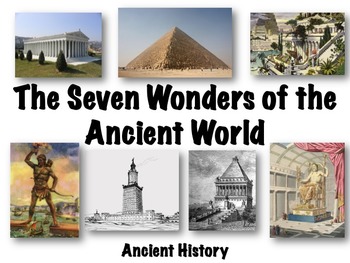See the famous Seven Wonders of the Ancient World: Walk through the lush Hanging Gardens of Babylon. Climb the great Lighthouse at Alexandria. Stand before the immense statue of Zeus at Olympia. Marvel at the beauty of the Temple of Artemis in Ephesus...
The ancient Greeks loved to compile lists of the marvellous structures in their world. Though we think of the Seven Wonders of the Ancient World as a single list today, there were actually a number of lists compiled by different Greek writers. Antipater of Sidon and Philon of Byzantium drew up two of the most well-known lists.
Why seven? The Greeks thought that the number had mystical significance. Perhaps because it was the total of the known planets (Mercury, Venus, Mars, Jupiter, Saturn) along with the Sun and Moon.
Many of the lists agreed on six of the seven items. The final place on some lists was awarded to the Walls of the City of Babylon. On others, the Palace of Cyrus, king of Persia took the seventh position. Finally, toward the 6th century A.D., the final item became the Lighthouse at Alexandria.
Since then it was Greeks who made the lists it is not unusual that many of the items on them were examples of Greek culture. The writers might have listed the Stonehenge if they'd seen it, but this place was beyond the limits of their world.
It is a surprise to most people to learn that not all the Seven Wonders existed at the same time. Even if you lived in ancient times you would have still needed a time machine to see all seven. While the Great Pyramid of Egypt was built centuries before the rest and is still around today (it is the only "wonder" still intact) most of the others only survived a few hundred years or less. The Colossus of Rhodes stood only a little more than half a century before an earthquake toppled it. 😀😀😀

No comments:
Post a Comment
Note: only a member of this blog may post a comment.